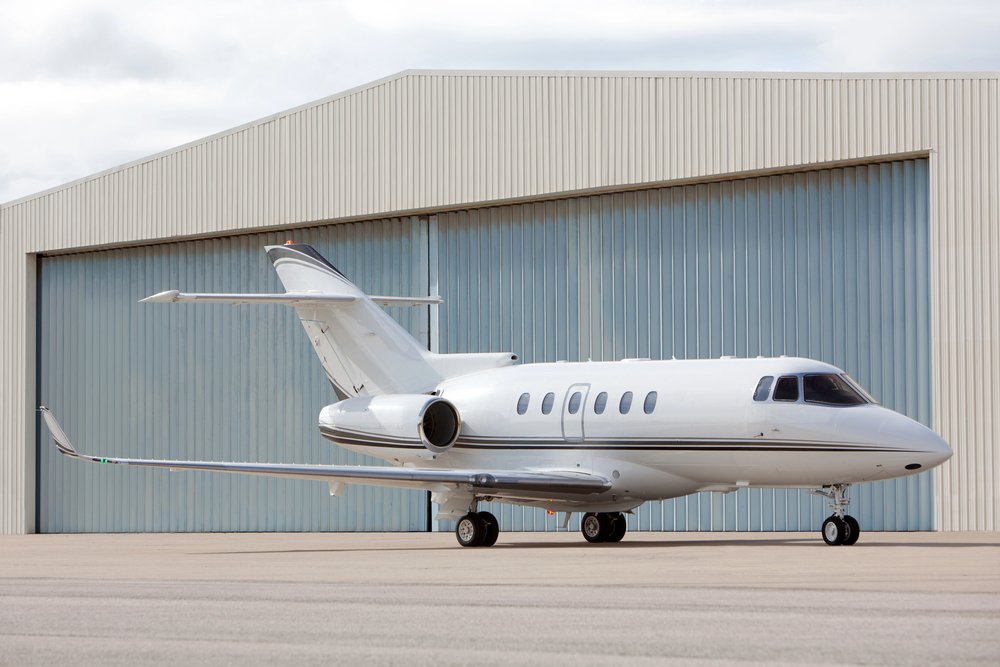Hangar Liability 101: What Every Aircraft Owner Should Know About Coverage Gaps
Oct 26, 2025

When most aircraft owners think about insurance, they focus on protecting their aircraft in the air — not in the hangar. But a surprising number of costly insurance claims occur on the ground, often in the very place your plane should be safest.
Whether you lease space in a community hangar or own a private facility, hangar liability coverage plays a vital role in protecting your investment. Unfortunately, many pilots and owners discover coverage gaps only after a mishap occurs.
Understanding how hangar liability works — and what it doesn’t cover — can save you from expensive surprises later.
What Is Hangar Liability Insurance?
Hangar liability insurance protects you when damage occurs to aircraft or property in your care, custody, or control (often called “CCC”). It applies when an incident happens inside the hangar or while performing operations related to aircraft storage, fueling, or ground handling.
For example:
- A visiting aircraft strikes a hangar door you were operating.
- A mechanic accidentally damages another tenant’s aircraft during maintenance.
- A fire starts in your leased hangar bay and spreads to neighboring aircraft.
In all of these cases, the aircraft or property doesn’t belong to you — but you may still be legally responsible for the damage.
The Common Misunderstanding: “My Aircraft Policy Covers That”
This is where many aircraft owners get caught off guard. Your aircraft hull and liability policy usually protects you when you operate your own aircraft, but it may not cover incidents that occur when the aircraft is stored or being handled on the ground — especially if another owner’s property is involved.
Similarly, FBOs and maintenance shops often assume their general business insurance includes hangar liability — but unless hangar-related risks are specifically endorsed, they’re typically excluded.
If you lease or share hangar space, you’re likely responsible under your lease agreement for damage to the building, other aircraft, or stored property. Without hangar liability coverage, that exposure falls directly on you.
What Hangar Liability Typically Covers
While policies vary, hangar liability insurance generally includes protection for:
- Damage to Non-Owned Aircraft: If another aircraft is damaged while in your hangar or under your control, your policy may cover the cost of repairs or replacement.
- Property Damage and Bodily Injury: Covers incidents like fire, explosion, or equipment malfunction that cause harm to people or property.
- Damage to Leased or Rented Premises: Protects you if you accidentally damage a hangar you rent or lease — for instance, by backing an aircraft into a wall or door.
- Personal Injury and Legal Defense: Some policies include defense costs if you’re sued for negligence related to hangar operations.
- Fueling and Towing Operations: Optional endorsements may extend coverage to fueling mishaps or towing accidents.
In short, hangar liability fills the gap between aircraft hull coverage and general business insurance, providing a layer of protection for the most common ground-based exposures.
What It Doesn’t Cover
Just as important as knowing what’s included is understanding what isn’t. Hangar liability insurance generally does not cover:
- Your own aircraft or property (that’s covered under hull insurance).
- Intentional or criminal acts.
- Wear and tear, corrosion, or mechanical failure.
- Pollution or environmental damage unless specifically endorsed.
- Workers’ compensation for employee injuries.
If you manage multiple aircraft, lease to others, or sublet hangar space, review your policy to confirm whether those third-party exposures are covered or excluded.
Real-World Example: When One Door Causes Six Figures of Damage
Imagine an owner operating out of a shared hangar. One morning, they open the hydraulic hangar door — unaware that a neighboring aircraft’s wingtip is parked just within its arc. The door strikes the wing, puncturing the composite skin and damaging internal components. The repair bill exceeds $150,000.
The hangar landlord points to the lease agreement, which states the tenant is responsible for any damage caused by their use of the facility. Without hangar liability coverage, that aircraft owner would have to pay out of pocket.
With the proper policy, the insurer covers the claim, including defense costs if the matter escalates to legal action. It’s a real-world example of how one simple mistake can create an expensive lesson in liability.
Key Questions To Ask Your Broker
Before you assume your insurance covers hangar incidents, review your policies and ask your broker these critical questions:
- Does my policy include hangar liability coverage, or do I need a separate endorsement?
- What are my coverage limits for non-owned aircraft and leased premises?
- Are fueling, towing, or maintenance operations included?
- Does my policy cover other people’s aircraft stored in my hangar?
- Am I protected if an employee or contractor causes the damage?
An aviation-specific broker can help identify overlaps or gaps between your hull, liability, and property policies.
Why Insurers Care About Hangar Safety and Documentation
Just as underwriters assess pilot experience for flight coverage, they evaluate facility management practices when underwriting hangar liability. Clean safety records, fire suppression systems, documented maintenance logs, and employee training programs all reduce perceived risk — and can lower your premium.
Simple steps like posting safety signage, maintaining door systems, and conducting annual inspections can demonstrate responsible operations and strengthen your insurer’s confidence.
The Bottom Line: Protecting Your Aircraft on the Ground Is Just as Important as in the Air
Many owners invest heavily in in-flight coverage but overlook the risks right outside the cockpit. Fires, ground collisions, and property damage claims can easily exceed six figures — especially when other aircraft are involved.
Hangar liability insurance is not just an add-on; it’s a critical safeguard that keeps your financial exposure grounded and your operations protected.
Before you renew your policy, take the time to understand your coverage limits and exclusions. One quick conversation with your aviation insurance specialist can prevent major losses down the line.
For informational purposes only.

